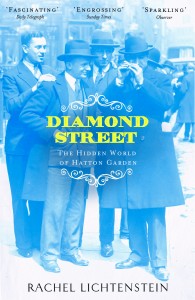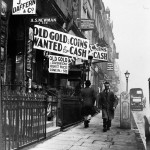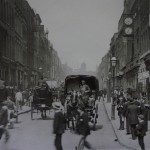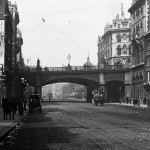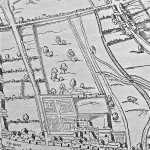‘Rachel Lichtenstein has written the story of Hatton Garden as a kind of three-dimensional hologram, in which she excavates what is above ground below it and backwards in time – the evolution of London itself.’
Linda Grant, The Times, 6 May, 2012
Hatton Garden is the fold in the map, one of London’s most mysterious and secretive streets, which has been home for two centuries to a deeply private working community of diamond and jewellery dealers. In Diamond Street, Rachel Lichtenstein uncovers their hidden world.
Here you’ll meet diamond dealers and goldsmiths, jewellers and lapidaries as well as sewer flushers, artists, geologists and visionaries such as Iain Sinclair, as Rachel Lichtenstein reveals the history, secrets and stories that bring this vibrant Clerkenwell street and its environs to life.
Intimately connected to the area both personally (through family) and professionally (as an archivist of London streets), Lichtenstein is uniquely placed to explore the extraordinary history of this mysterious quarter.
She visits the London diamond bourse, underground gold vaults and Dickensian-looking jewellery workshops, as well as subterranean rivers, ancient burial sites and medieval crypts. Moving beyond the street itself into parts of Clerkenwell, Holborn and Farringdon, Lichtenstein follows the ancient perimeter of the original Hatton Garden estate, which once bordered the lost River Fleet. Crossing the same territory repeatedly, guided on her walks by different experts, she gathers new layers of the story with each journey. The result is a brilliantly immersive and multi-layered portrait; both a documentary and a secret history of a vanishing world.
The paperback edition of Diamond Street: the hidden world of Hatton Garden (Hamish Hamilton) will be available from June 2013. To purchase a copy of the hardback please visit your local bookstore or alternatively please click here.
Diamond Street reveals the ever-changing social currents and waves of immigration that have always been one of the characteristics of the great city at whose heart it lies and Lichtenstein lunches with the children of Italian grocers, has tea with the descendants of Belgian Chasidic diamond dealers, talks to historians, archaeologists and poets, gathering all these “memories, whispers, shards” from a history “so rich in memory-traces, lost landscapes and sacred architecture”.’
Natasha Lehrer, Jewish Chronicle, 31 August, 2012
‘Lichtenstein employs the micro-history of the London street as a point of entry into past and present lives….The interviews with retired diamond traders and goldsmiths provide a generous heartbeat to the book, as do the testimonies from inhabitants of Little Italy….Diamond Street is a lively and rewarding addition to the Capital’s rich history.’
Ken Worpole, The Independent, 8 July, 2012
‘Lichtenstein is an artist, writer, local historian and archivist and her multi-faceted approach makes fascinating reading. Among her many talents is her ability to make us look with a fresh eye at familiar urban spaces.’
Lucy Popescu, The Independent on Sunday, 24 June, 2012
‘What she finds in the Hatton Garden workshops – filings and dust, scraps and broken pieces of precious metal – also describes the fragmented narratives that, allied with diligent archival trawls, she assembles into this fascinating and much- needed account.’
Sukhdev Sandhu, The Guardian, 16 June, 2012
‘She walks the streets, digs through the archives, interviews its oldest surviving characters and even succeeds in getting a guided tour of the subterranean Victorian sewers. She uncovers a world with a rich history, not just of “underground rivers, lavish gardens and forgotten palaces”, but one which still retains a distinctively Eastern European shtetl atmosphere, even though it has long ceased to be top dog in the diamond world. Lichtenstein’s family, including her grandfather, father and husband, have all worked there over the years and she weaves her childhood memories in brilliantly.’
Katie Law, London Evening Standard, 12 June, 2012
‘One of the singular pleasures of Lichtenstein’s writing is that she dramatises her painstaking research process – she describes her visits to libraries and archives, rather than hiding them away in footnotes….Above all, however, the great joy of Lichtenstein’s books is that she encourages us to look again at the places we take for granted.’
Laura Barnett, The Telegraph, 19 June, 2012
